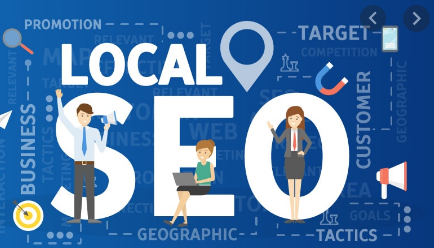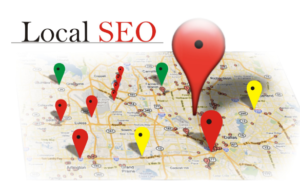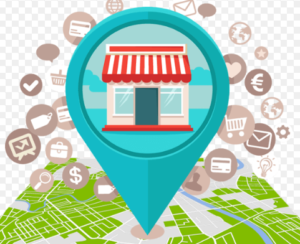
Do you have a functional and well-designed webpage? Today, websites have become digital storefronts where people shop for products and services. They can browse the webpage by clicking a few buttons, add products to their cart, and checkout by filling in their details. Sounds simple!
However, what happens if your webpage isn’t visible to the audience? Millions of people could search for products and services like yours but cannot catch a glimpse of your digital store. It happens when your website isn’t optimized for the search engine. As a result, Google doesn’t rank it amongst the top results, leaving it on the second or third page of search results.
If that is the case with your business, it is time to invest in search engine optimization (SEO). It will help boost brand visibility, build users’ trust, and improve website engagement. You can also optimize the webpage for local SEO to enhance visibility in local search results for better results. It targets nearby customers, leading to more foot traffic and website visits.
Let us show you the ropes if you are ready to jump. Here are five best tips for businesses looking to optimize local SEO.
1. Optimize for voice search
Nowadays, search engines have witnessed a rapid increase in voice searches. Therefore, optimizing how people ask questions in local SEO has become vital. Firstly, all marketers should remember that they are optimizing the site for local marketing products; hence, long-tail keywords will be more effective. And due to this, you must adjust the content’s SEO to make it sound more conversational and informal.
Moreover, understanding the user intent is important when optimizing voice search. People perform voice searches when they need specific information. For example, they might ask Alexa to ask about your store timings. Therefore, ensure all such crucial information is readily available on your webpage. For this, you can make an FAQ section on the website. It will help match the exact phrasing of voice search queries, improving visibility.
2. Improve internal linking structure
There are two types of links – internal and external. Most marketers believe external links are ideal for boosting SEO rankings, but internal links can be a game-changer for local SEO. Internal links support website navigation by assisting search engine crawlers with information and web structure. Likewise, these links also improve page authority, improving website visibility.
Internal links can also connect relevant pages with your website. Hence, any link from a page related to your local business to other pages that provide information about your products can build credibility.
Now, the question is how to improve this linking structure. First, identify local landing pages on your website and create a sitemap. It will help visualize the connections between different pages and their relevance. Next, group related local content into different categories to create a pathway for users to navigate your site. You can also use descriptive keywords for your internal links to improve the website’s visibility in local search results.
3. Optimize webpage for local SEO
Another crucial step towards local SEO is to build an optimized website that captivates local audiences. Here are a few tips to optimize the website for local SEO.
- Contact information: Today’s consumers want to know everything about businesses; hence, create an “about us” page on the website. If you have multiple store locations, include all your business addresses, email, and operational hours. It will make it easier for the audience to find you.
- Mobile-friendly optimization: More than 82% of smartphone users conduct near-me searches, which means you must optimize the website for mobile devices. It involves four elements – responsive page display, readable font, clear text, and media display.
- Keyword research: Every marketer must target local keywords that answer people’s search intent. For example, you can add “near me” to your existing keywords to target nearby customers. Let us explain how. You are a boutique owner whose site contains keywords like stylist, designer, clothes shop, etc. To attract local audiences, you can use keywords like stylist near me or clothes shop nearby.
4. Create local content
Previously, content marketing was all about appealing to search engines. But as Google gets smarter every day, marketers should start creating content for audiences. You can focus on writing about local or industry news to captivate your target audience. You can capitalize on the popularity of an upcoming community event and write about it. Likewise, cover local events from a local business owner’s perspective.
Once you have a few content ideas ready, learn about your target market. You cannot create valuable content if you don’t know who you are creating it for. Thus, go through the readers’ personas and understand the demographics. Do you young adults read your blogs? Is it the Gen Z that has caught your attention? Depending on your audience, you can curate content that resonates with them.
5. Focus on link signals
According to stats, link signals are the most crucial factors for local SEO. These are backlinks pointing visitors to your site while boosting your local SEO. They contribute to the site’s credibility and visibility in the local search, indicating your site is a trusted source. So, the question is, how can you get high-quality backlinks? Look below.
- Use local directories and industry-specific web pages to list your business. Alongside this, ensure your contact information is consistent with increasing link signals.
- You can collaborate with other local businesses and influencers. In turn, they will write about your business offerings, leading to high-quality backlinks from their website.
- Reach out to local media outlets and share stories about your business. Believe it or not, media coverage often helps generate authoritative backlinks.
- Develop relationships with local bloggers and journalists who cover topics related to your business niche. They can reference your webpage in their articles.
Conclusion
Today, local SEO has become an integrated part of every SEO strategy for local businesses. It helps the audience find your business readily, improving website traffic, lead generation, and conversions. Therefore, it is time every marketer optimizes the webpage for local SEO. Besides content and long-tail keyword, ranking in local search results takes a few backlinks and optimization. Therefore, ensure your site is mobile-friendly and optimized for voice search to gain visibility on the search engine results page.






